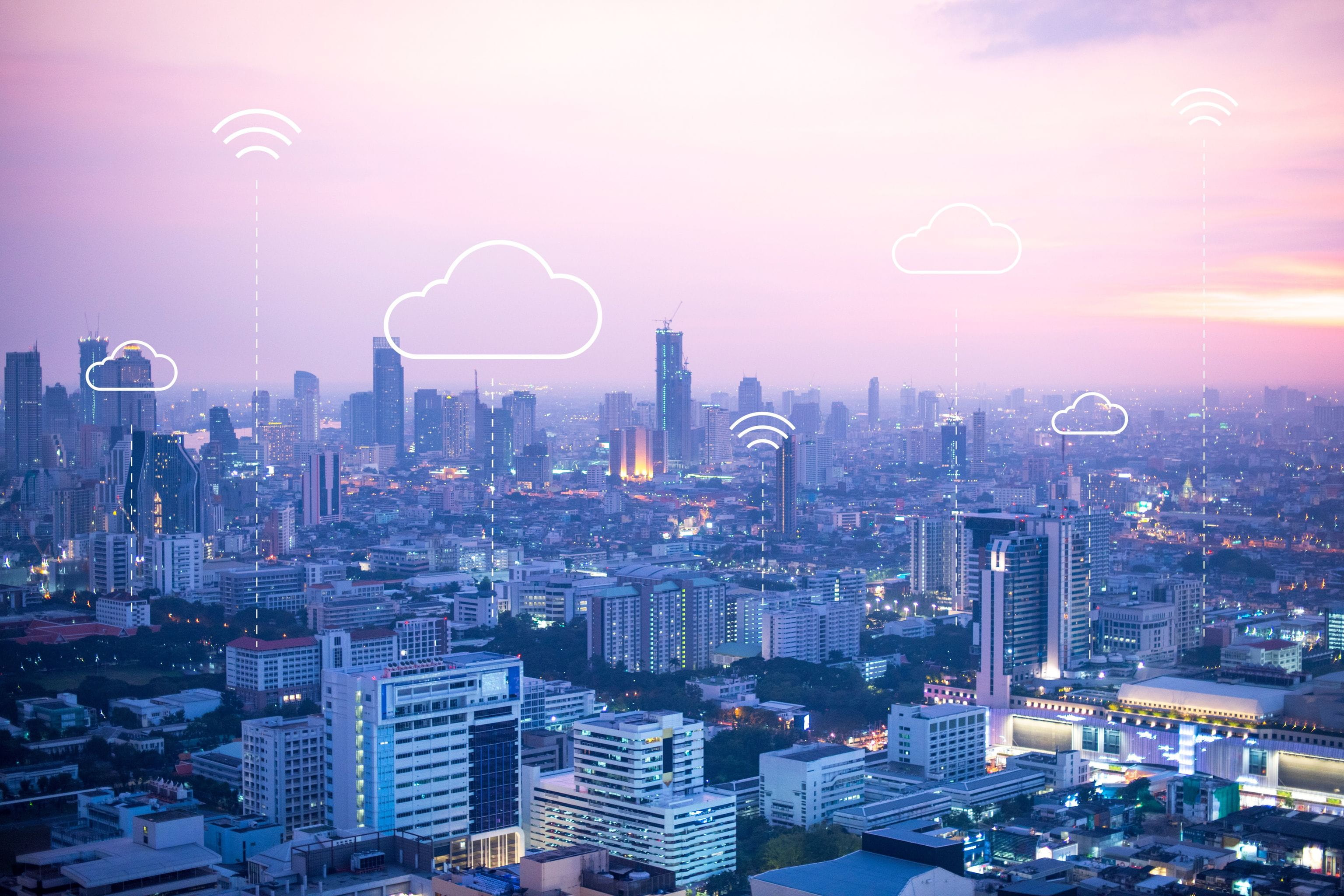
Data volumes are growing exponentially, thanks to ever-increasing device connectivity, real-time analytics, and mobile applications. These elements drive new data storage and processing demand, making computing applications the new norm for every business DX strategy.
Why computing?
IoT-connected devices are predicted to reach 43 billion by 2023 [1]. Massive amounts of data, disorganized and unconnected, are churned every day. Prior to cloud computing, data and software were stored on hard drives and servers, leaving data management unscalable and prone to crashes. In the present day, global organizations are using computing solutions to help them better handle data.
In the computing realm, cloud computing is a critical facilitator for completing their digital transformation and achieving end-to-end DX. As businesses move from a piecemeal strategy to a more comprehensive end-to-end transformation, cloud computing unlocks business agility with better security and less infrastructure maintenance. According to Forbes, 13% of large businesses with over 1,000 employees have moved to the cloud [2].
Large organizations employ cloud solutions for greater elasticity, processing ease, and cost optimization. Many IT professionals cited cost savings as a primary reason for adopting cloud technology: 94 percent said the cloud would lower setup and maintenance costs, and 47 percent said their IT costs would drop by 30-50 percent as a result of employing cloud infrastructure and apps [3]. The capital expense of buying hardware, software, and IT management is eliminated by applying cloud computing.
It’s true: Edge computing is swallowing the cloud
Yet the rapid expansion of IoT projects across a range of sectors is driving the development of edge computing, which refers to IT systems capable of processing data directly at the point of production. Gartner predicted that enterprises that have deployed edge use cases in production will grow from about 5 percent in 2019 to approximately 40 percent in 2024 [4]. Edge Computing devices use information from IoT devices to create intelligent self-decisions and real-time reactions that are latency-sensitive. Autonomous vehicles, fleet management devices, and smart surveillance are all instances of Edge Computing.
Enterprises are investing in edge technologies to reap a host of benefits. Opposite to cloud computing, using the local area network for data processing provides enterprises with more bandwidth and storage at lower costs. Furthermore, as processing takes place at the edge, less data needs to be transported to the cloud (or data center), allowing faster processing at lower latency. As a result, business security is tightened, particularly in the case of sensitive data transferring, while the overall business performance is improved thanks to consequential ease of data traffic.
Edge computing also solves the problem of data sensitivity breaches. As data is protected by the data privacy rules of the nation in which it is held, European businesses may want to ensure that their information is stored within Europe to ensure GDPR compliance. This is possible with edge data centers, demonstrating why the edge is advantageous in industries like healthcare and manufacturing that demand high levels of data protection.
According to Gartner, by 2025, three-quarters of enterprise-generated data will be created and handled at the edge, rather than in a traditional centralized data center or cloud [5].
Examples across vertical industries
- Industrial manufacturing: Millions of connected devices have been installed in manufacturing plants to collect data on production lines, equipment performance, and finished products. Due to the remote location of most manufacturing facilities, moving data to centralized servers — whether in the cloud or on-premises — can be prohibitively expensive or impossible. Edge computing connects different systems effectively and securely with lower data traveling distance. According to Frost & Sullivan, 90 percent of industrial businesses will employ edge computing technologies by 2022 [6].
- Energy and Utility: Edge computing will be a key technology as smart grids become more widely adopted, aiding businesses in managing their energy consumption better. In factories, plants, and offices, sensors and IoT devices are connected to an edge platform to monitor and analyze energy consumption in real-time. Enterprises and energy firms can optimize the level of energy consumption with real-time visibility, such as running high-powered machines during off-peak hours for electricity demand.
- Retail: Another sector that can profit substantially from using edge devices and edge analytics is the retail sector and its stock inventory. Edge devices such as sensors, RFIDs, and cameras can help track inventory, items in high demand, or are misplaced. This allows retail workers and managers to maintain their shelves stocked and provide analytics to understand sales patterns and customer preferences better. Consequently, they can maximize shelf space and automate the reordering and receiving process. Retailers can utilize edge devices near the checkout area to collect inputs on consumer sentiments to improve the total retail experience.
- Smart Cities: Smart cities are structured upon IoT networks and edge computing. Street lights, smart benches, smart info screens and displays equipped with connected sensors enable real-time data gathering for smart safety systems. These infrastructures also serve as a channel to provide data to citizens on topics such as weather, municipal services, and transport. According to IDC research, global spending on edge computing will exceed $250 billion in 2024, implying a considerable ecosystem potential to govern cities with the congregation of cutting-edge technologies [7].
Future at the edge
Because edge computing brings computers closer to the customer, the first incentives for the edge will be any use cases that enable and affect customer behavior. Edge computing will evolve beyond the consumerization of IoT, addressing anything from on-demand computers to helping real-time app engagements and enabling innovative customer experiences.































